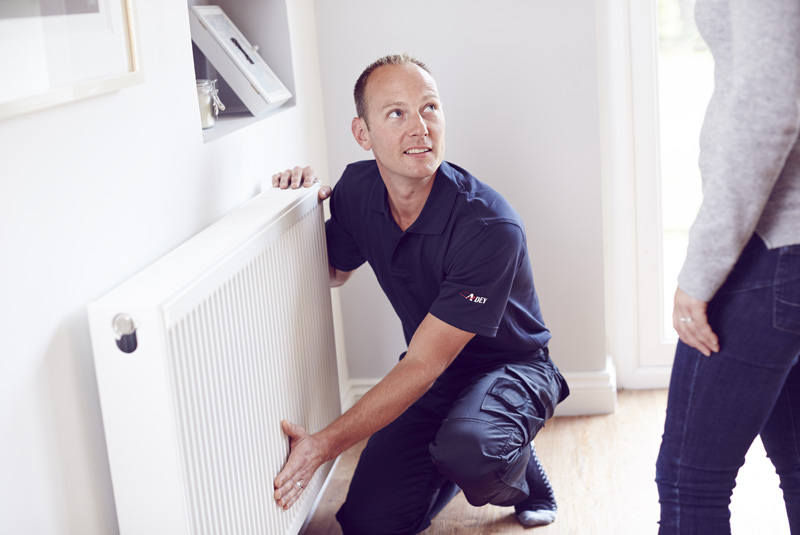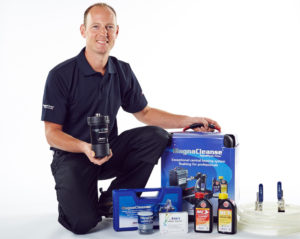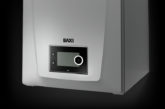
Dr Neil Watson, Global Technical Director at Adey Professional Heating Solutions, examines why system cleansing is a key part of a best practice approach to central heating system maintenance and should form part of an installer’s armoury.
The evolution of power-flushing over the years has seen the process develop in line with advances in technology. It is now one of the most effective ways installers can clean heavily sludged systems, mainly as a result of the introduction of magnetic filtration which has made it more efficient and effective.
Moving with the times
Traditional power-flushing has a pump at its heart and is carried out under low pressure, using the velocity of water to flush away deposits in the central heating system. Once any sludge has been loosened, clean water is forced through the system, pushing out the contaminated water through a dump valve. As most installers know well, this can be an incredibly time-consuming process because it relies solely on gradual dilution of the dirty water with incoming mains water. Consequently, it can take between four to six hours, or even longer for heavily sludged systems, and it uses a high volume of water.
The introduction of magnetic filtration more than 10 years ago revolutionised central heating system maintenance and the technology is now being applied to system cleaning with phenomenal success throughout the UK and Europe. Nearly 18,000 of Adey’s MagnaCleanse system flushing units have been sold to date.
By directly targeting and capturing the root cause of blocked systems, carrying out a magnetic filtration system cleanse not only saves the installer time (carrying out Adey’s MagnaCleanse process could be achieved in as little as two hours and removes virtually 100% of the suspended debris), but also uses up to 90% less water.
Powerful magnets capture the magnetite which is then easily disposed of. The process also provides an ideal opportunity for installers to show their customers what’s been clogging up their system and explain the benefits of correct system treatment. If deposits are simply flushed away, as with a traditional powerflush, it’s harder for an installer to demonstrate how effective the process can be.

Added benefits
There are a number of other steps that make this increasingly popular flushing process even more effective and it’s this attention to detail that helps installers get the most from the process. The use of a premium chemical cleaner during the clean will help break down any deposits, making them easier to remove.
An agitation tool such as Vibraclean from Adey should be used on each radiator to further dislodge any adherent debris. This is done with the radiators half-filled, which helps to concentrate the chemical cleaner into the blockage, ensuring the process is as effective as possible. The radiators should be agitated one at a time while all the others on the system are closed-off.
Advances in the development of chemical formulations are also adding value to system cleaning, offering installers greater flexibility and providing them with the best tools to do the job. Adey’s chemical cleaner can either be dosed into the filter and circulated during the clean or alternatively, dosed up to a month in advance. By dosing in advance the cleaning process will be started immediately rather than having to circulate the cleaner for an hour or so with the heating on when the installer comes back to flush. This reduces the time an installer spends on site and is only possible as a result of the development of specific chemical formulations which protect vulnerable metals, such as aluminium, during the cleaning process.
As an additional benefit, an aerosol type product can be dosed into the system against system pressure in as little as 20 seconds. This means that the system doesn’t have to be drained down for the cleaner to be added, making the dosing process easier.
Once all radiators have been treated and any magnetite collected by the filter magnets has been removed, a hose is attached to the drain valve and with only the furthest radiator from the boiler left open, cold water is flushed through the system until it runs clear. As with the cleaning process, this is done one radiator at a time before re-filling and venting.
 Five steps to efficiency
Five steps to efficiency
The adoption of the Adey Best Practice approach to heating system maintenance has been instrumental in bringing system cleaning to the fore. For the most effective central heating system maintenance protection and to maintain the boiler and pipework, a five-step approach of clean, flush, protect, maintain and test is recommended.
Without removing the sludge that causes the heating system to function less efficiently, the following steps in the process will be considerably less effective. It’s also an important consideration in ensuring boiler warranties remain intact. Many manufacturers have increased the length of their warranties, which is undoubtedly a positive for homeowners, however, this warranty will not be honoured if the installer has fitted the boiler to a dirty system. Carrying out a total system cleanse is the most effective way to do this, giving not only the installer, but the homeowner peace of mind.
System cleaning isn’t something that should be viewed in isolation. Installers doing this risk only doing half the job with potentially damaging results. When used in partnership with premium quality chemicals and truly effective filters as outlined above, it provides the complete water treatment solution.
Adapting to these best practice changes, which have been widely introduced to the system cleansing process in recent years, will help installers go the extra mile for their customers.
For more information on Adey and its best practice approach, visit: www.adey.com













